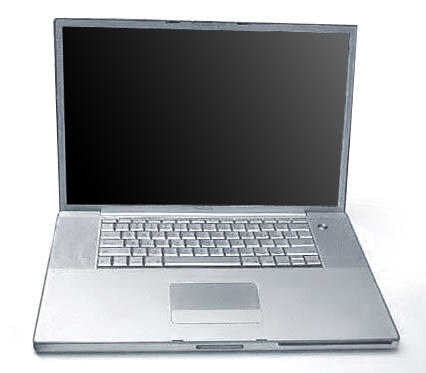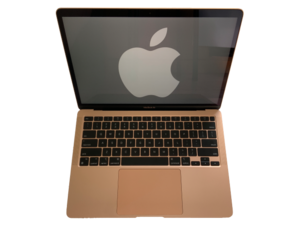What you need to install Windows 10 on Mac
- MacBook introduced in 2015 or later
- MacBook Air introduced in 2012 or later
- MacBook Pro introduced in 2012 or later
- Mac mini introduced in 2012 or later

- iMac introduced in 2012 or later1
- iMac Pro (all models)
- Mac Pro introduced in 2013 or later
All six laptops highlighted below as MacBook Air alternative options cost roughly as much as Apple's MacBook Air, have a 13.3-inch or slightly larger screen, weigh less than 3 pounds (1.4 kg),. Nox is an android emulator for both windows PC and mac. Get the official download links of Nox app player 6.1.0.1 for PC or mac OS. Download microsoft office mac free. Testing conducted by Apple in October 2020 using preproduction MacBook Air systems with Apple M1 chip and 8-core GPU, as well as production 1.2GHz quad-core Intel Core i7-based MacBook Air systems with Intel Iris Plus Graphics, all configured with 16GB RAM and 2TB SSD. Tested with Shadow of the Tomb Raider 1.0.1 using the built-in benchmark, at. AirDroid 3 blurs device lines even further with new PC and Mac clients, Android screen mirroring. AirDroid is an awesome app that has brought iOS 8 - like Continuity features to Android devices since long before Continuity ever existed.
The latest macOS updates, which can include updates to Boot Camp Assistant. You will use Boot Camp Assistant to install Windows 10.
64GB or more free storage space on your Mac startup disk:
- Your Mac can have as little as 64GB of free storage space, but at least 128GB of free storage space provides the best experience. Automatic Windows updates require that much space or more.
- If you have an iMac Pro or Mac Pro with 128GB of memory (RAM) or more, your startup disk needs at least as much free storage space as your Mac has memory.2
An external USB flash drive with a storage capacity of 16GB or more, unless you're using a Mac that doesn't need a flash drive to install Windows.
A 64-bit version of Windows 10 Home or Windows 10 Pro on a disk image (ISO) or other installation media. If installing Windows on your Mac for the first time, this must be a full version of Windows, not an upgrade.
- If your copy of Windows came on a USB flash drive, or you have a Windows product key and no installation disc, download a Windows 10 disk image from Microsoft.
- If your copy of Windows came on a DVD, you might need to create a disk image of that DVD.
How to install Windows 10 on Mac
To install Windows, use Boot Camp Assistant, which is included with your Mac.
1. Check your Secure Boot setting
Learn how to check your Secure Boot setting. The default Secure Boot setting is Full Security. If you changed it to No Security, change it back to Full Security before installing Windows. After installing Windows, you can use any Secure Boot setting without affecting your ability to start up from Windows.
2. Use Boot Camp Assistant to create a Windows partition
Open Boot Camp Assistant, which is in the Utilities folder of your Applications folder. Follow the onscreen instructions.
- If you're asked to insert a USB drive, plug your USB flash drive into your Mac. Boot Camp Assistant will use it to create a bootable USB drive for Windows installation.
- When Boot Camp Assistant asks you to set the size of the Windows partition, remember the minimum storage-space requirements in the previous section. Set a partition size that meets your needs, because you can't change its size later.
3. Format the Windows (BOOTCAMP) partition
When Boot Camp Assistant finishes, your Mac restarts to the Windows installer. If the installer asks where to install Windows, select the BOOTCAMP partition and click Format. In most cases, the installer selects and formats the BOOTCAMP partition automatically.
4. Install Windows
Unplug any external devices that aren't necessary during installation. Then click Next and follow the onscreen instructions to begin installing Windows.
5. Use the Boot Camp installer in Windows
After Windows installation completes, your Mac starts up in Windows and opens a ”Welcome to the Boot Camp installer” window. Follow the onscreen instructions to install Boot Camp and Windows support software (drivers). You will be asked to restart when done.
- If the Boot Camp installer never opens, open the Boot Camp installer manually and use it to complete Boot Camp installation.
- If you have an external display connected to a Thunderbolt 3 port on your Mac, the display will be blank (black, gray, or blue) for up to 2 minutes during installation.
How to switch between Windows and macOS
Restart, then press and hold the Option (or Alt) ⌥ key during startup to switch between Windows and macOS.
Learn more
If you have one of these Intel-based Mac models using OS X El Capitan or later, you don't need a USB flash drive to install Windows:
- MacBook introduced in 2015 or later
- MacBook Air introduced in 2017 or later3
- MacBook Pro introduced in 2015 or later3
- iMac introduced in 2015 or later
- iMac Pro (all models)
- Mac Pro introduced in late 2013 or later
To remove Windows from your Mac, use Boot Camp Assistant, not any other utility.
For more information about using Windows on your Mac, open Boot Camp Assistant and click the Open Boot Camp Help button.
1. If you're using an iMac (Retina 5K, 27-inch, Late 2014) or iMac (27-inch, Late 2013) or iMac (27-inch, Late 2012) with a 3TB hard drive and macOS Mojave or later, learn about an alert you might see during installation.
2. For example, if your Mac has 128GB of memory, its startup disk must have at least 128GB of storage space available for Windows. To see how much memory your Mac has, choose Apple menu > About This Mac. To see how much storage space is available, click the Storage tab in the same window.
3. These Mac models were offered with 128GB hard drives as an option. Apple recommends 256GB or larger hard drives so that you can create a Boot Camp partition of at least 128GB.
The following is latest release of Pinnacle 21 Community, which includes Validator, Define.xml Generator, Data Converter, and ClinicalTrials.gov Miner. The download also contains the latest set of standard validation configurations. Pinnacle 21 Community 3.1.0 Download for Windows Pinnacle 21 Community 3.1.0 Download for Mac OS X. Download pinnacle studio 21 for mac.
By Tasnia Salinas, on January 27, 2020, in Mac Uninstaller
How to get started?
In this article, we help you to learn How To Easily Uninstall Downloads on New MacBook Air by using our dedicated Mac App Uninstaller software - Omni Remover. Make sure you have downloaded the latest version here before continuing.
On October 30, 2018, Apple unveiled a redesigned 13.3' MacBook Air model, with a Retina display, Touch ID, Thunderbolt 3, and 3 colors (What Is Other On Mac Storage). The MacBook Air began shipping the day of the event and will be available in-store on November 7. If you're new to Apple MacBook Air (Retina display) and will to have some basic lessons, here is a quick guide on how to uninstall downloads on the new MacBook Air.
Apple Macbook Air Wikipedia
Part 1: How To Uninstall Downloads on New MacBook Air Manually
There are three ways to have app downloads on your MacBook Air (Retina display). You can download apps from Apple App Store, or download directly from app vendor's website, or you may have shipped CD disc that include the app setup package (How To Uninstall Programs on Mac). Follow steps below to learn how to properly uninstall app downloads from your MacBook Air (Retina display) manually (Learn How To Uninstall MacKeeper Mac).
- Step 1: To uninstall app downloads from MacBook Air, open Finder > Applications (a particular folder on macOS for storing installed software) > Choose the downloads that you want to remove from your MacBook Air:
- Step 2: After removing the app downloads to Trash, these are still app download related preference settings, app running/crashing logs, and other 'Hidden' app components (How To Disable System Integrity Protection/SIP on Mac) . To get rid of all these downloads leftovers, you need to move further: Open Finder > in Menu, click Go > enter ~/Library/.
- Step 3: You may see a large amount of system file folders here. Now locate the downloads leftover files by digging into each folder. They are possibly stored in the following folders: Application Support | Caches | Containers | Frameworks | Logs | Preferences | Saved | Application State | WebKit
- Step 4: Drag the files associated with your deleted download to Trash > Empty Trash and restart your Mac to finish the removal of this unwanted application.
Part 2: How To Uninstall Downloads on New MacBook Air Completely
This manual way to uninstall app downloads from your MacBook Air (Retina display) is intractable because there are just overwhelming steps involved. Omni Remover is one of the most advanced Mac App Uninstaller program, which makes the app download uninstalling procedure extremely easy. Here are the detailed steps (Learn How To Uninstall Office 2011 Mac).
Step 1:
Click here to download Omni Remover (Ready for macOS Catalina) > Install and Open Omni Remover on your MacBook Air (Retina display).
Step 2:
In Omni Remover > App Uninstall > Choose the app download name that you want to uninstall from your MacBook Air > Clean Uninstall.
Step 3:
Then Omni Remover will start scanning all app data/files > After it finished scanning, click Clean Uninstall to start removing this app download from your MacBook Air (How To Clear Cache on Mac).
Have you successfully uninstalled your unwanted app downloads from your MacBook Air (Retina Display)? If you still have problems, feel free to drop us a line in comment box below. Before leaving this page, make sure you have downloaded Omni Remover, which is capable of removing all stubborn app downloads easily and cleaning up all app cache junks in one click. Give it a try here: Free Download Now >

Macbook Air 6 2
Omni Remover
Macbook Air History
Version 3.3.5 (January 27, 2020) / Support macOS Catalina
Category: Mac Uninstaller
